Gran
Gran is an architectual collective based in Stockholm
that uses computer code as its design material.
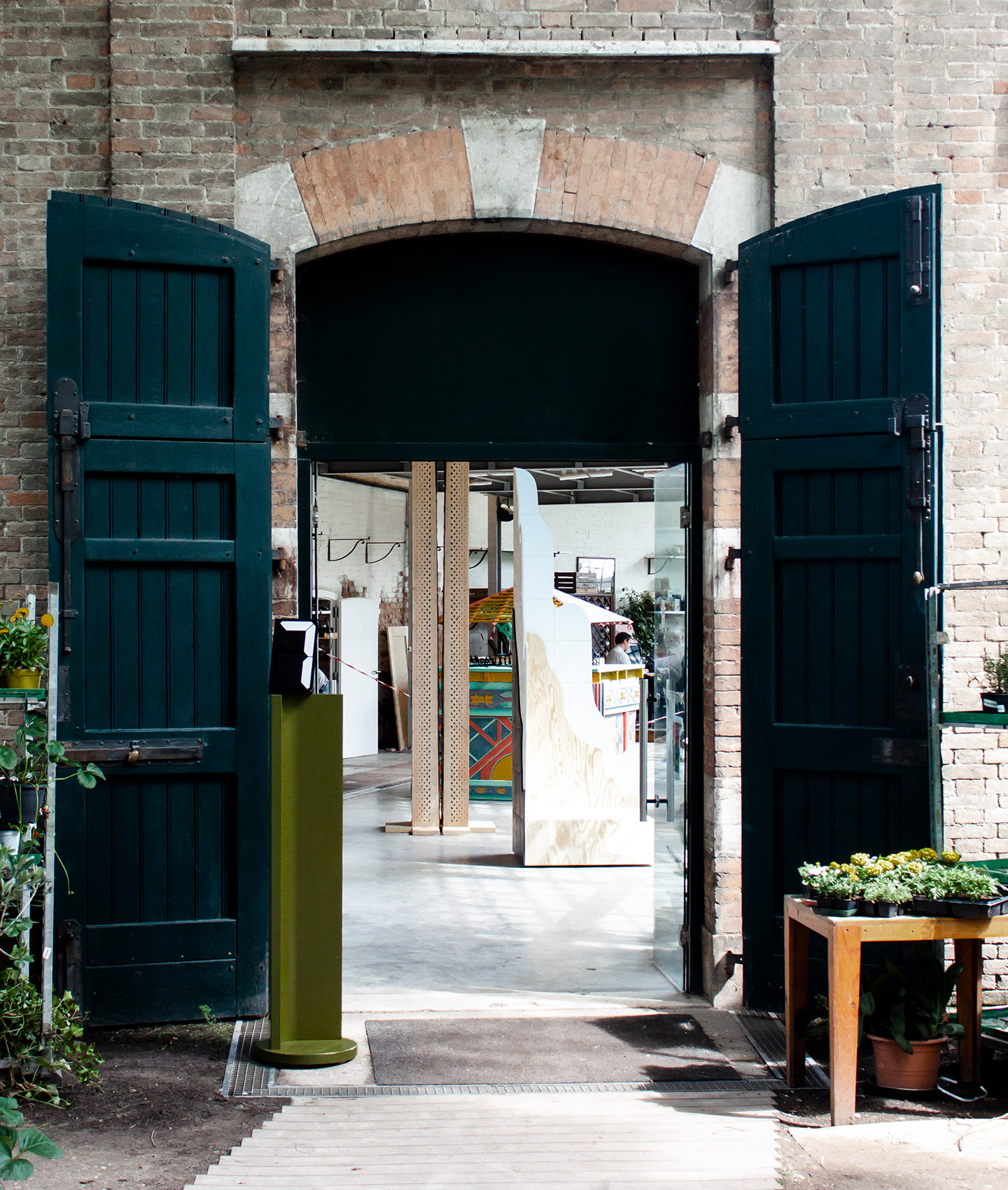
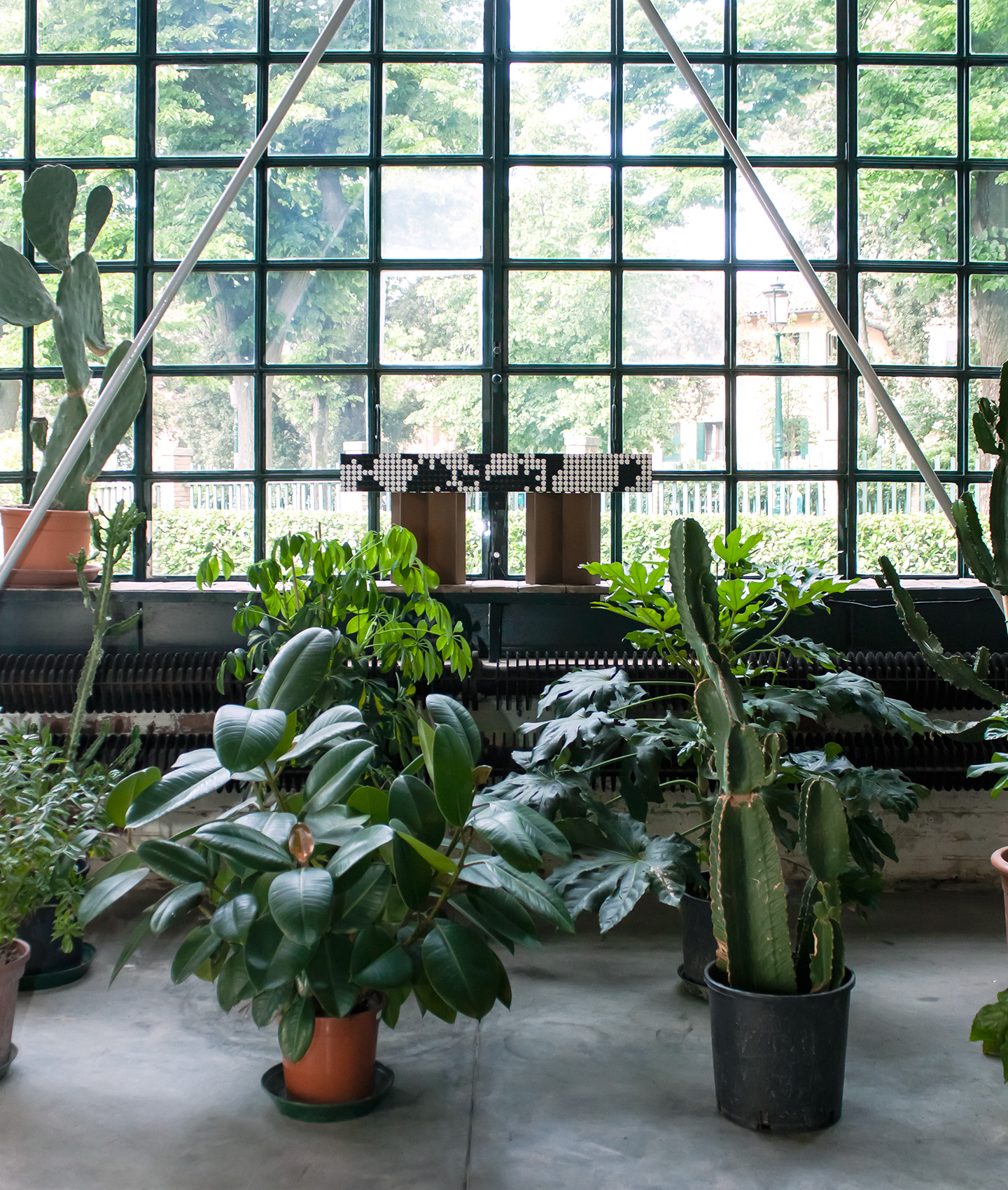
Space programs
Space Programs consist of a set of design investigations that consider computer code as a matter of architecture, each proposing a cognitive micro-climate for the exhibition space. These take as their input the sensors, cameras and microphones pervading contemporary spaces, and use for their output the equally ubiquitous displays of elevators, public transports or supermarkets. These technologies, together with the semiotic codes allowing their effective transmission of information, make up an interactive vernacular architecture increasingly central to the inhabitation of contemporary space.
Space Programs highlight a blindspot in traditional forms of architectural inscription and representation: Reyner Banham already observed the difficulties of architecture to account for technologies such as air-conditioning or electric lighting, limited by graphic representations that can hardly register the temporal, dynamic, and non-geometrical phenomena they implicate; this is even more the case of the programmed behaviours of control and communication systems regulating today’s environments.
These small experiments consider instead the use of code to notate the sequential unfolding of events as means of producing architecture. Text written in languages such as C++, Java or Python, inscribe, plot and notate performances that will take place at the Serra dei Giardini. As a phrase, to ‘take place’ implies the spatialisation of a temporal phenomenon, the extensive dimension of the event. Space Programs use uncomplicated code, existing software libraries and ordinary displays to compose situations that explore the spatial regimes promoted by software and information technology. All programs are open source and available at gitlab.com/gran-codes.
Gran: Pablo Miranda Carranza, Åsmund Izaki and Ami Izaki.
Furniture designer: Karl-Johan Hjerling (hjerling.com) / MP12 (@studiomp12)
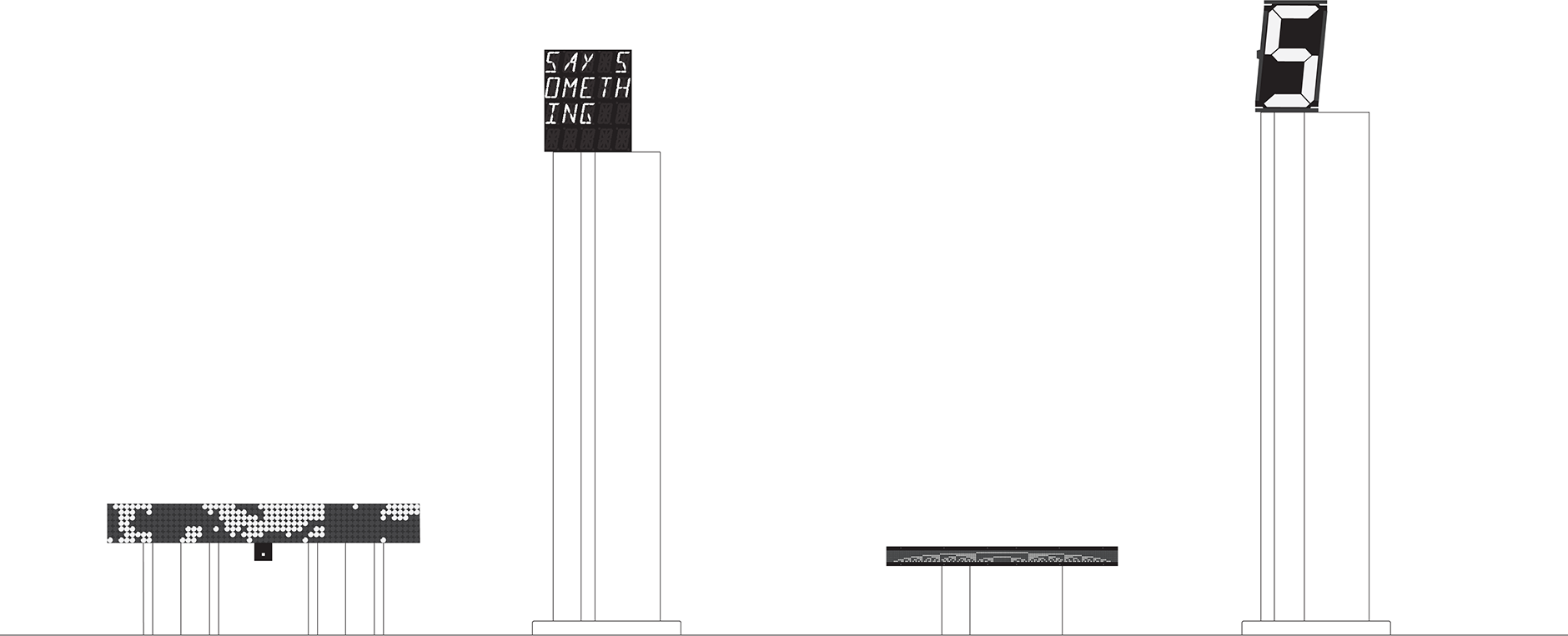
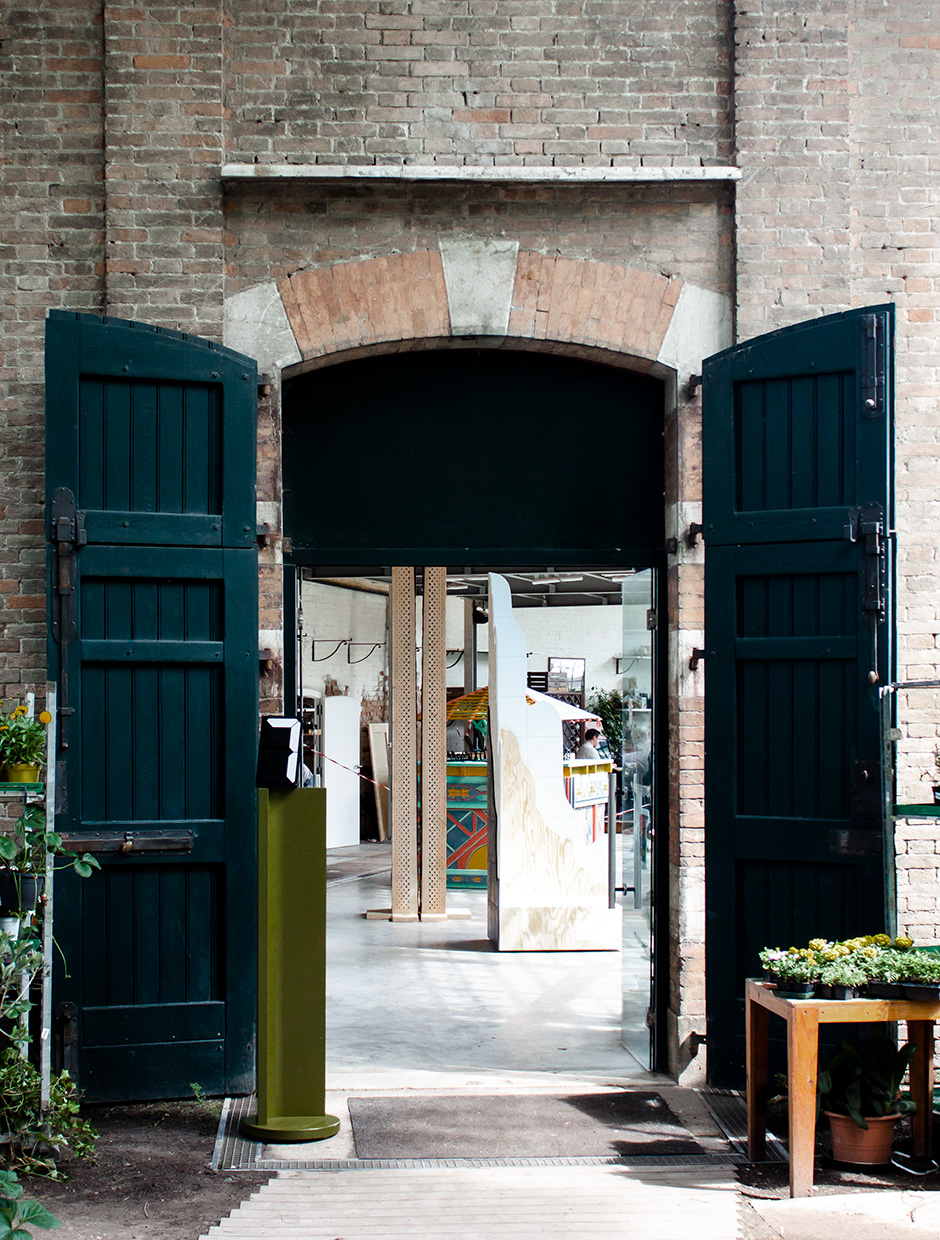
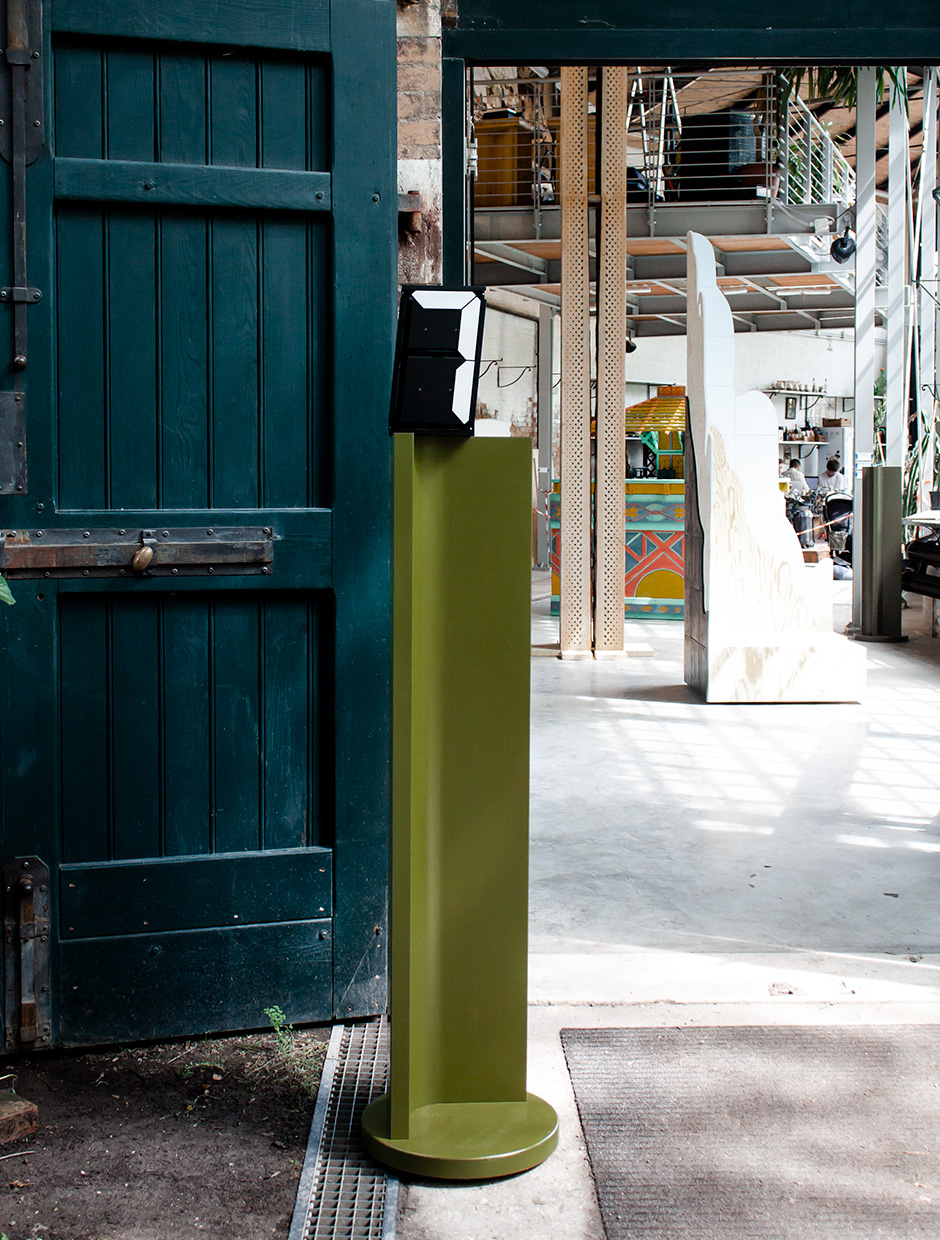
Program #1
This program counts people at the greenhouse’s entrance; the act of entering or leaving is transformed into the mechanical occurrence of flipping segments in a single digit display. Components: 7-segment electromechanical display, Arduino board, PIR motion sensors. Written in C++.
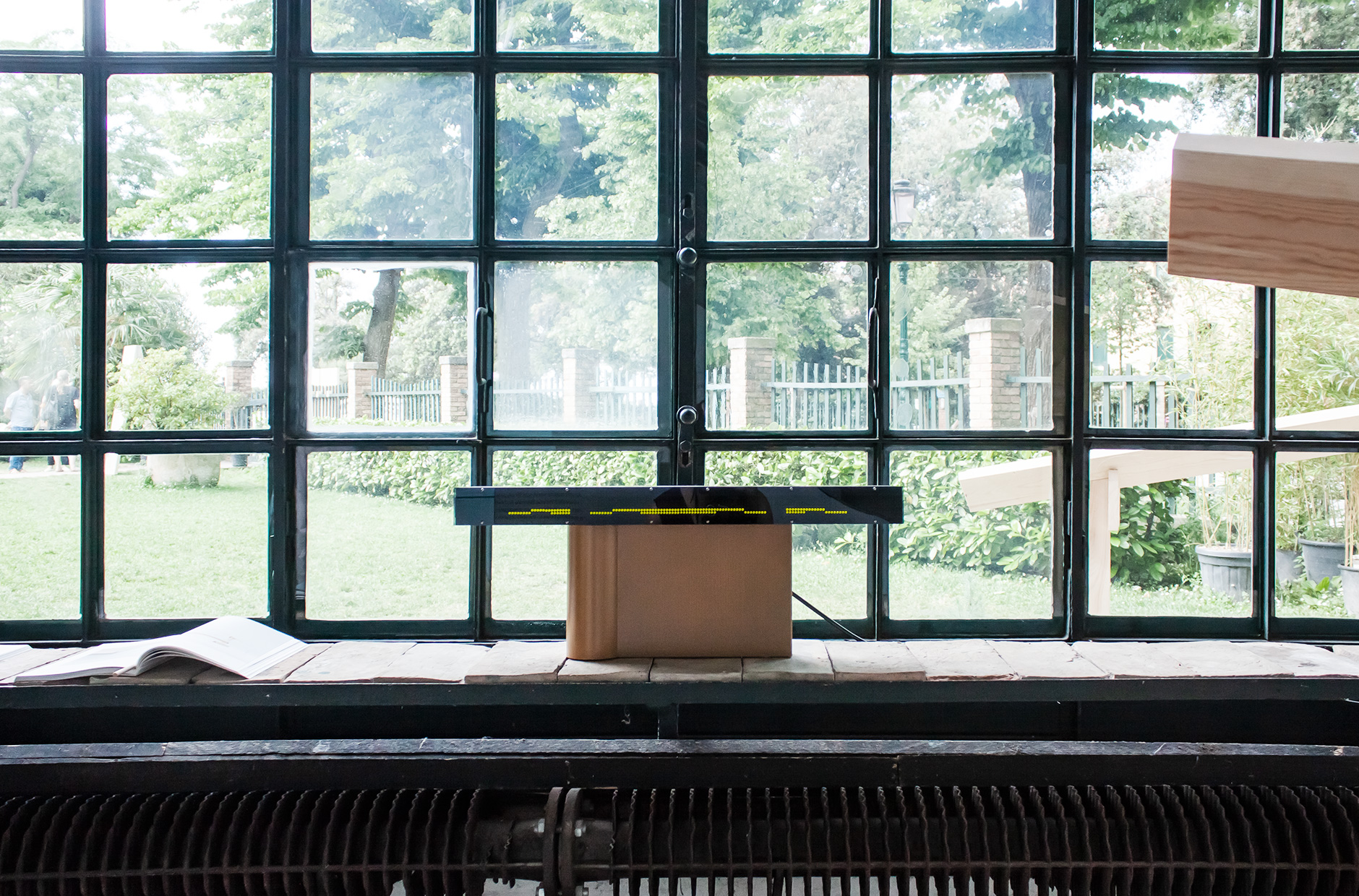
Program #2
The second program transduces acoustic signals in its vicinity into a graphic pattern, a direct rendering of the binary numbers indicating changing sound levels. Components: Dot matrix display, Arduino board, microphone. Written in C++.
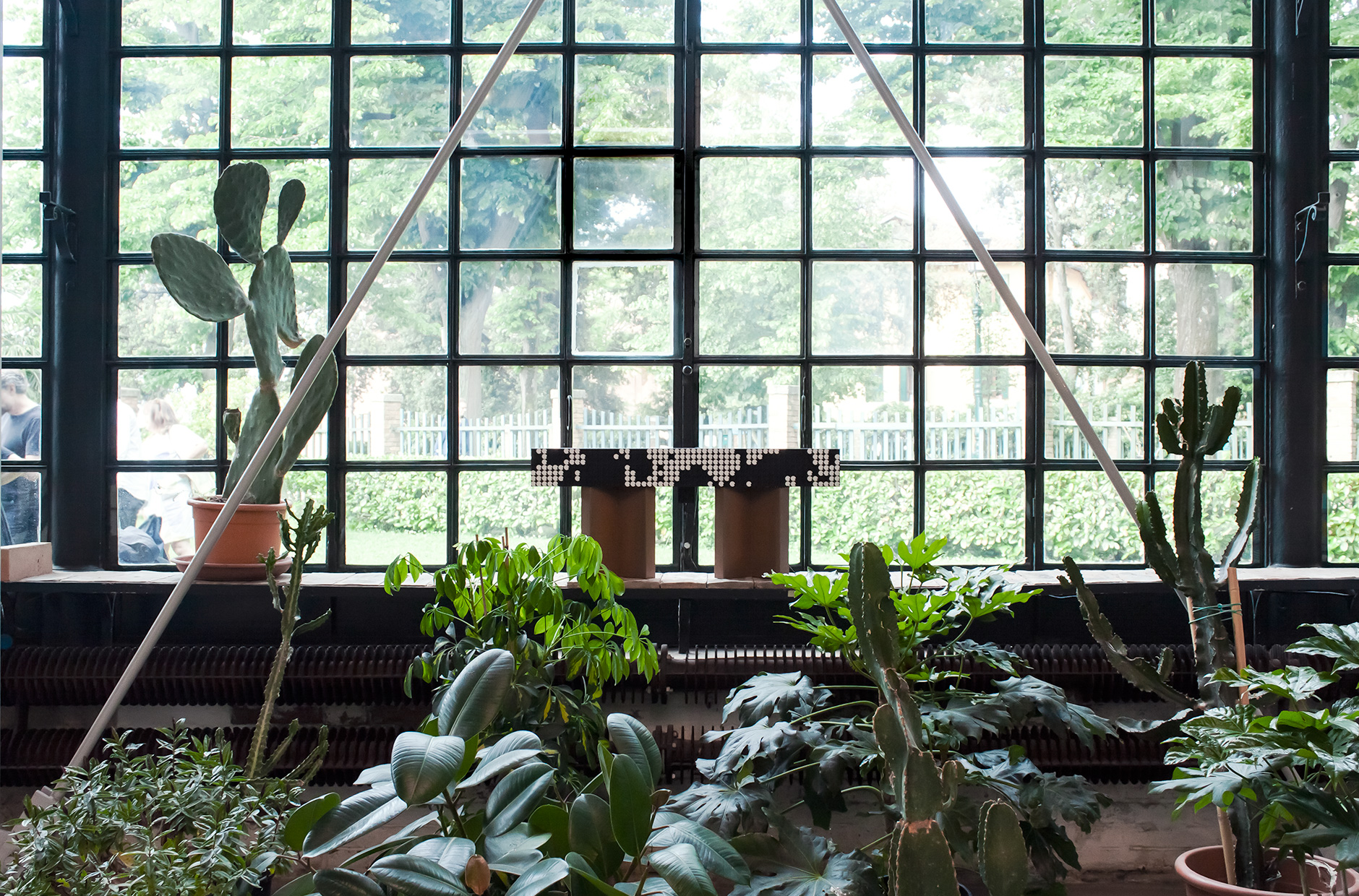
Program #3
Through computer vision, program #3 transforms movement from a camera into the states of dots on a flip-dot display; the coming and going at the Serra dei Giardini become graphic traces and mechanical noise.Components: Flip-dot display, Raspberry Pi computer, OpenCV computer vision library and camera. Written in Processing/Java.
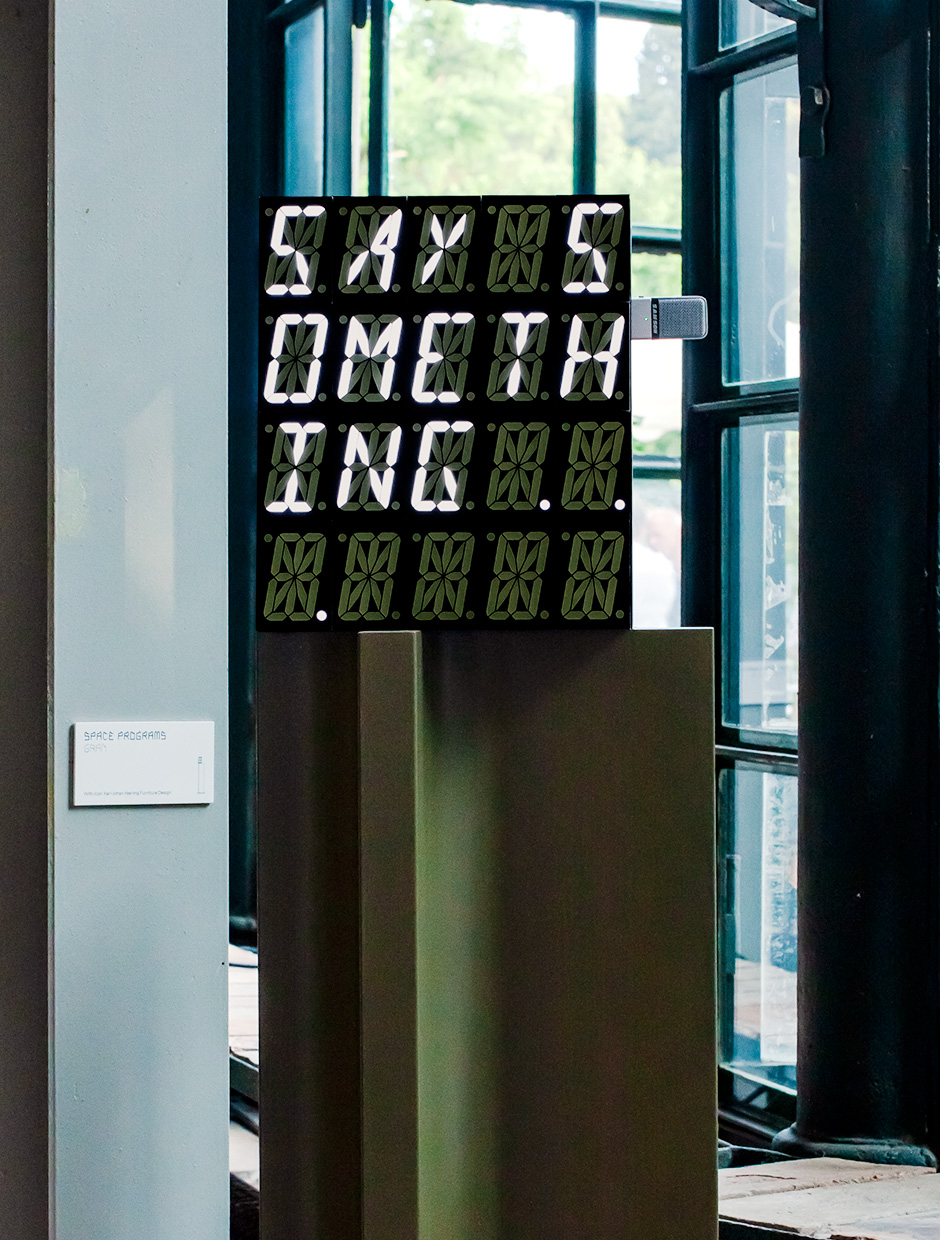
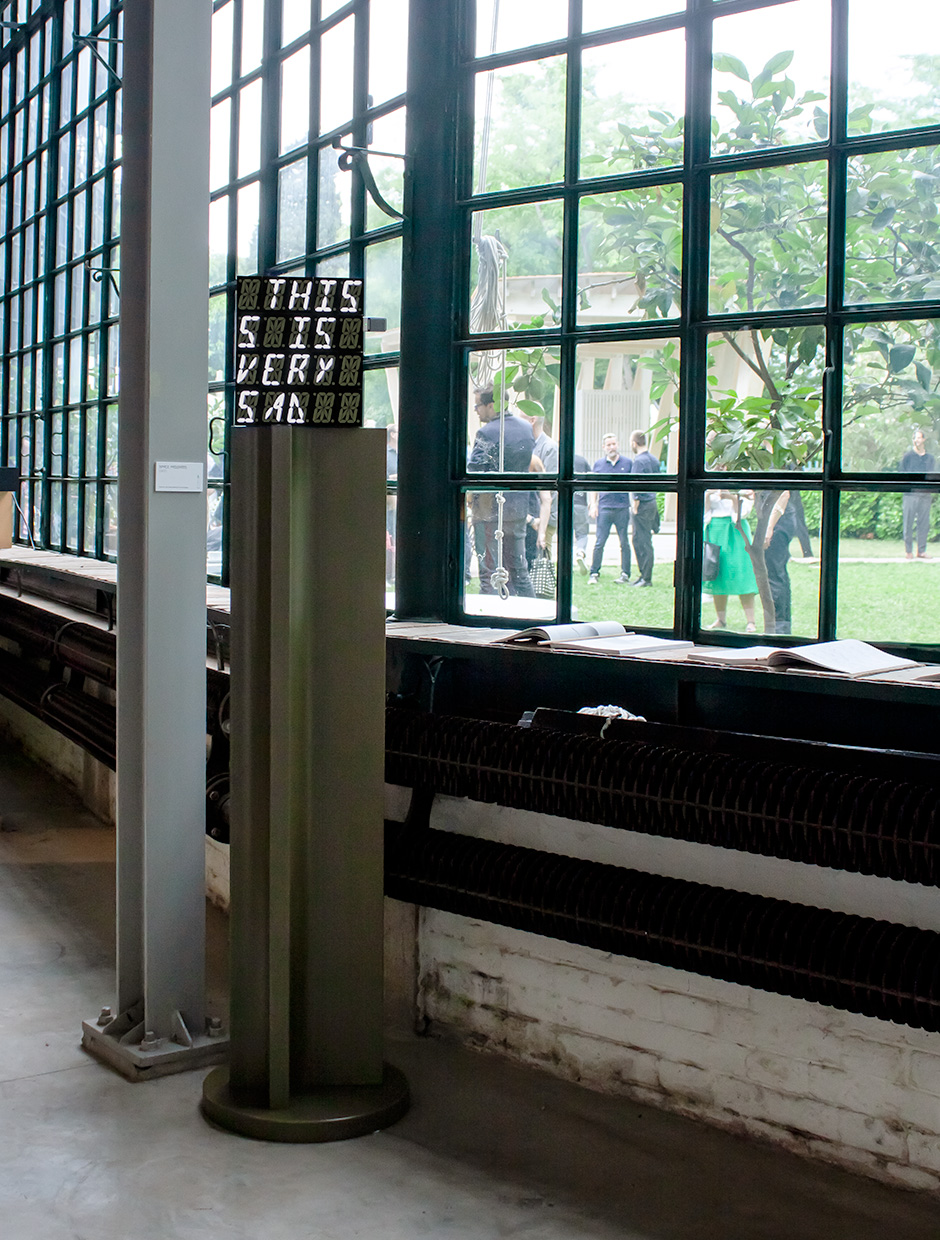
Program #4
The last program uses speech recognition to transcribe spoken words into an alphanumeric display; these can only be translated to American English, highlighting software’s cultural biases and the spatial climates they create. Components: alphanumeric display, Raspberry Pi computer, Mozilla’s DeepSpeech library and microphone. Written in Python.